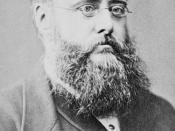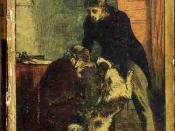Film Critique
The Black Robe
The purpose for production behind The Film "The Black Robe" by Robert Lantor was to tell the story of a Jesuit missioner named Paul Lafarge and his quest to convert the indigenous population of Canada into Christianity in the 1600's. Although the main plot of the story is to tell Lafarge's story, it is also intended to portray trough the film the differences between the indigenous customs and traditions and the European mannerisms and education. The story is based on the fiction novel written Wilkie Collins.
The story begins in 1634 in a small French settlement in Quebec. Here, father Lafarge is given the task by his superiors to take after a 1500 mile trip to a mission in Lake Huron. He is to be accompanied by a group of Algoquin Indians who made a deal with the village's governor to look after Lafarge and assure he reaches the Huron mission safely.
Lafarge is then joined by a young Frenchman named Daniel who seeks adventure and discovery of his own Christian faith. In this trip everyone's strengths are tested. Although Lafarge is loyal to his religion and beliefs, he eventually gets to a point where he questions on the authenticity of his beliefs. Daniel turns his back on Lafarge and the European society to pursue happiness with an Algoquin woman in the wild. The Algonquin are all killed and captured by Iroquois Indians, but they stay true to their beliefs and culture until their last breath.
Through the film, the producer installs the characters in several situations that highlight their cultural differences. For example in the scenes before the journey, Lafarge and Daniel are given instructions by their superiors on how to convive with their fellow Indian travel mates show some of...


